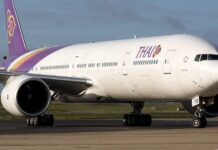
The International Air Cargo Association (TIACA) recently interviewed Mr. Turhan Özen, Chief Commercial Officer of Turkish Airlines, about a variety of topics regarding the air cargo industry. Here is part of their conversation:
What is the outlook for air cargo volumes worldwide for the rest of 2019 and for 2020? In the past few months volumes have been declining – do you see that trend continuing?
As is known, the air cargo sector and international commerce are highly linked and interdependent. Since the second half of 2018, we have witnessed negative political escalations from the key actors and this situation has triggered worldwide protectionism and changes in the trade lanes that have hurt the air cargo sector. While looking at this year, we can confidently say that 2019 will end with negative results and volume drops between 3-5% year on year. For the next year, of course we are hopeful that 2020 will be a recovery year for the air cargo sector. In order for air cargo volumes to grow in 2020, there are issues that need to addressed such as trade tensions between the US and China, a clear end to the Brexit process and the establishment of new trade partners etc.
How is air cargo demand evolving among the different sector verticals and in different regions? What do you see as big growth drivers in terms of e.g. economic developments, consumer trends etc.?
Air cargo capacity supply now outperforms overall demand, so sector growth and profitability are negatively affected. However, some sector verticals and regions continued to grow during 2019. For the sector verticals, we should highlight the importance of e-commerce and some specific cargo products such as perishables, pharma and high tech that are naturally dependent on air transportation. For the regions, we observed a drop in most of the regions during 2019 except Latin America and Africa. These regions are still developing and their need for air transportation is growing year by year. According to the International Air Transport Association (TIACA), these regions represent 2.3% and 1.6% of total demand, but the growth rates encourage airlines to focus on these areas.
How is the balance between belly hold capacity and full-freighter capacity evolving and what do you expect from the future?
As a combination carrier that operates both passenger and cargo aircrafts, we have experienced that carrying cargo in the belly hold with lower operational costs is now more profitable due to the negative trend in unit revenues. However, cargo aircrafts are highly useful to support the passenger network of the airlines and more suitable for carrying heavy and oversized cargoes. Scheduling cargo flights are also more flexible and more reactive to the sector developments. Considering the results in 2019, we are expecting airlines to use more efficient cargo aircrafts in future and for the balance of belly and cargo aircraft to be more likely to stay close to each other while belly usage will outperform cargo with minimal differences.
อัพเดตข่าวสารและบทความที่น่าสนใจในอุตสาหกรรมโลจิสติกส์ก่อนใคร ผ่าน Line Official Account @Airfreight Logistics เพียงเพิ่มเราเป็นเพื่อน @Airfreight Logistics หรือคลิกที่นี่










